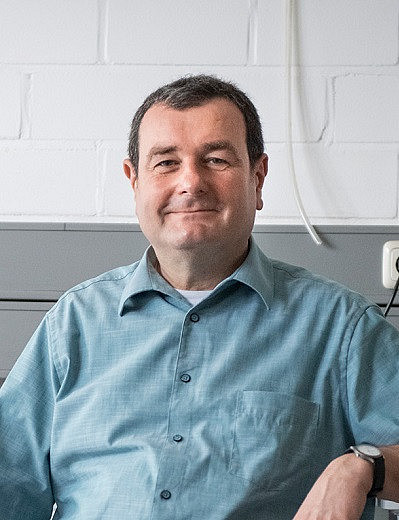Chemical Hybrid Materials
Luminescent Molecular Materials
The preparation of materials showing luminescent properties is a central topic in the chemical hybrid materials group. Both metal containing and metal free luminescent materials are investigated and have specific advantages and disadvantages. Based on rare earth metal phosphonic ester complexes, nanoporous coordination networks of different dimensionality have been prepared and the interplay of ligand and metal was varied to allow metal or ligand centered excitation or emission as well as energy transfer between both entities. By employing these strategies, it has been possible to blend emissive centers in a way that they add up to a white light emitting material.

Using the same principles in a reverse manner the sharp absorption and emission bands along with relatively long lifetimes of the excited states in lanthanides, we are aiming at surface immobilized molecular entities for optical switching and information storage within the LOEWE project SMolBits in collaboration with other CINSaT based research groups. Based on metal free phosphorus based organic luminescent molecules have been prepared which show unique luminescence properties and quantum yields as well as superior phase mixing behavior with polymer blends. These advantageous features allowed the preparation of luminescent imprinted structures and particles taking advantage of this unique type of chiral dye in cooperation with the group of Prof. Hillmer within the project MASH.

Chiral molecules
With respect to fundamental research the unique bonding situation and electronic properties of heavier elements endow organic materials with advantageous features related to the interaction with light or electromagnetic fields in general. We are actively investigating chiral molecules with tailored absorption properties which are attractive objects for studies in laser driven ionization and related investigations (e.g. MW) to observe and understand the origin and to learn controlling fundamental physical effects related to the interaction of such chiral objects with circularly polarized light. This effort is part of the joint interdisciplinary projects ELCH (CRC 1319) funded by the DFG.

References
K. Krekić, D. Klintuch, R. Pietschnig, Chem. Commun. 53, 11076-11079 (2017). K. Krekić, D. Klintuch, C. Lescop, G. Calvez, R. Pietschnig, Inorg. Chem., 58, 382-390 (2019). F. Roesler, B. Kaban, D. Klintuch, U.-M. Ha, C. Bruhn, H. Hillmer, R. Pietschnig, Eur. J. Inorg. Chem., 4820-4825 (2019)
Prof. Dr. Rudolf Pietschnig
full member

- Telephone
- +49 561 804-4615
- pietschnig[at]uni-kassel[dot]de
- Location
- Universität Kassel
Fachbereich 10 - Naturwissenschaften & Mathematik
Institut für Physik
Heinrich-Plett-Straße 40
34132 Kassel
- Room
- 2201
